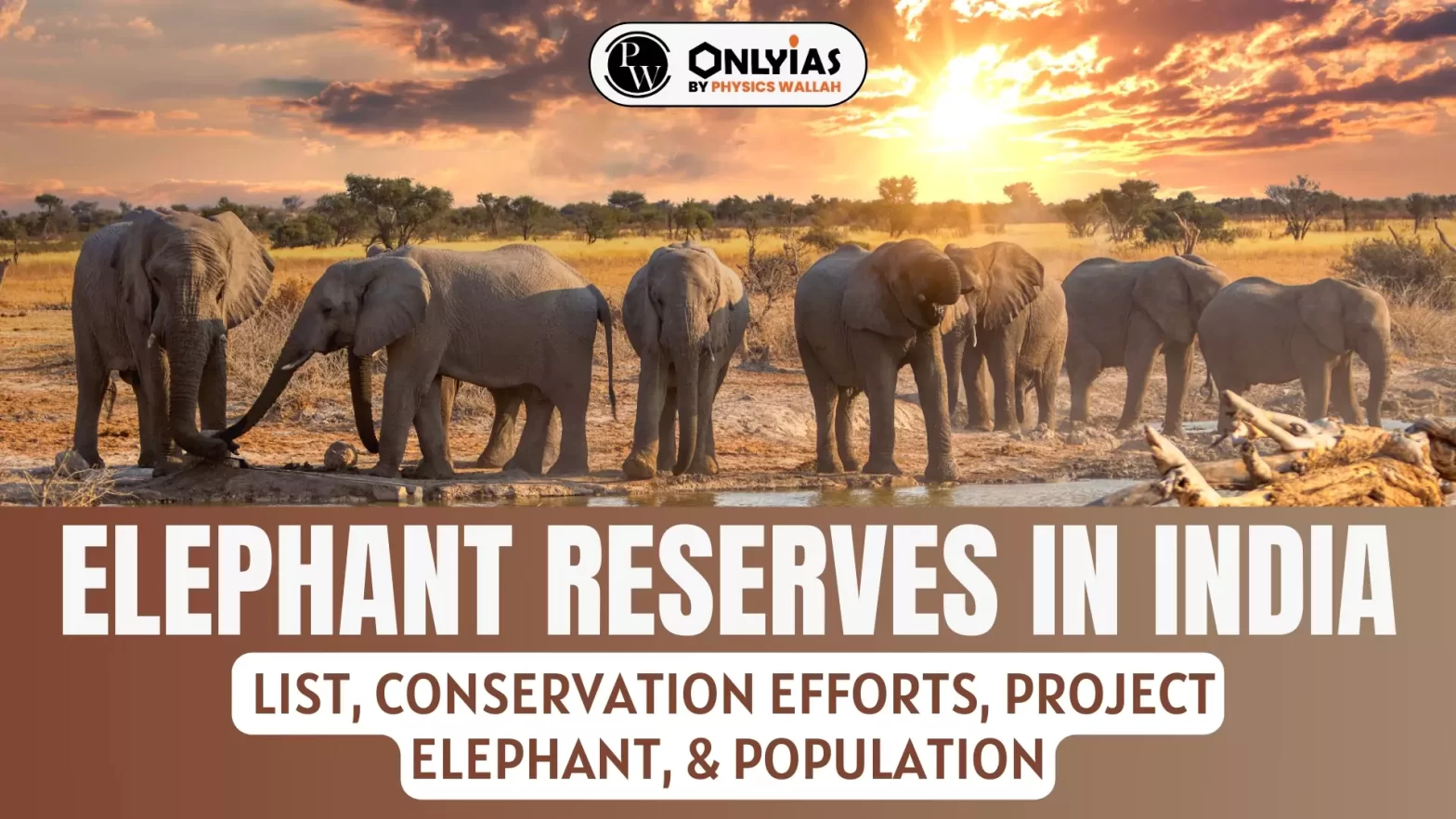
Elephant reserves in India are important sanctuaries that are dedicated to the protection and conservation of elephants, one of the most majestic and intelligent creatures in the animal kingdom. These reserves aim to protect the natural habitats of elephants, ensuring their survival among the growing threats such as habitat loss, human-wildlife conflict, and poaching. With the help of this blog explore the significance, structure, and impact of these elephant reserves in India while exploring notable examples worldwide.
Elephant Reserves are areas set aside for the conservation and protection of elephants and their habitats. These reserves aim to ensure the long-term survival and proper-being of elephant populations.
Elephant Reserves are created to shield the natural habitats, migration routes, and feeding grounds critical for the sustenance of elephant populations. They contribute to biodiversity conservation and promote coexistence among elephants and local communities.
The wild elephant population in India is presently predicted to be between 25,000 to 29,000. However, the conservation popularity of male elephants, known as tuskers, is increasingly more precarious, with the most effective about 1,200 finches in India.
As of now, 33 Elephant Reserves have been established in 14 major elephant states in India. These Elephant Reserves overlap with Tiger Reserves, Wildlife Sanctuaries, and Reserved Forests, which are protected under the Wildlife (Protection) Act, 1972, the Indian Forest Act, 1927, and other local state acts. Here is the table listing the 33 Elephant Reserves in India.
Enroll now for UPSC Online Course
Enroll now for UPSC Online Classes
Enroll now for UPSC Online Coaching
Elephant Reserves in India are critical for numerous reasons, basically focused on the conservation and properly-being of elephant populations:
Enroll now for UPSC Online Course
Elephant Reserves in India play a pivotal function inside the protection of Asian elephants (Elephas maximus), an endangered species cherished for its iconic status. These reserves serve as crucial conservation areas, committed to safeguarding the natural habitat and universal well-being of these majestic creatures.
Additionally, the reserves actively make contributions to research projects, academic packages, and network engagement, fostering a holistic method to elephant conservation.
Project Elephant, initiated in February 1992, is a scheme backed through the Central Government of India. This application is devoted to helping the safeguarding and powerful management of elephants in states where wild elephant populations exist freely.
Enroll now for UPSC Online Course
Project Elephant has set forth several targets with the overarching aim of ensuring the well-being of domesticated elephants, safeguarding elephants, their habitats, and corridors, as well as addressing the human-elephant battle. The specific pursuits consist of:
In collaboration with the Wildlife Trust of India, the Ministry of Environment and Forests launched the “Hathi Mere Sathi” campaign on May 24, 2011, in Delhi.
Elephants, the largest land mammals, are primarily categorized into two species: Asian elephants (Elephas maximus) and African elephants (Loxodonta africana). While they share similarities in magnificence and ecological importance, there are notable differences between them in terms of physical characteristics, behaviour, and habitat preferences. Below is a detailed comparison to understand these differences better:
| Aspect | Asian Elephant | African Elephant |
|---|---|---|
| Scientific Name | Elephas maximus | Loxodonta africana |
| Size | Smaller, with a shoulder height of 2–3.5 meters | Larger, with a shoulder height of 3–4 meters |
| Ears | Smaller, rounded ears | Larger, fan-shaped ears |
| Forehead | Twin-domed forehead with a deep groove in the centre | Sloped, smooth forehead |
| Tusks | Only males usually have tusks, and some may lack them entirely | Both males and females have tusks |
| Skin Texture | Smoother skin | Wrinkled skin |
| Trunk Structure | One finger-like projection at the tip of the trunk | Two finger-like projections at the tip of the trunk |
| Habitat | Found in forests and grasslands across Asia | Inhabit savannas, forests, and deserts of Africa |
| Social Structure | Smaller herds led by a matriarch | Larger herds with more complex social structures |
| Diet | Primarily grazers with occasional browsing | Both grazers and browsers |
| Population Status | Endangered due to habitat loss and human conflict | Vulnerable due to poaching and habitat degradation |
Ready to boost your UPSC 2025 preparation? Join PW’s UPSC online courses today!
UPSC Exam 2025 Related Articles
UPSC Prelims 2025 Exam
UPSC Notification 2025
UPSC Preparation 2025
UPSC Eligibility 2025
UPSC Exam Pattern
UPSC Syllabus
<div class="new-fform">
</div>
